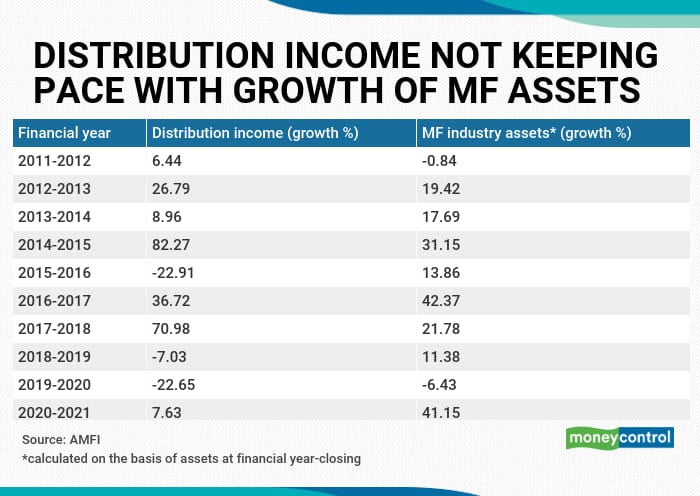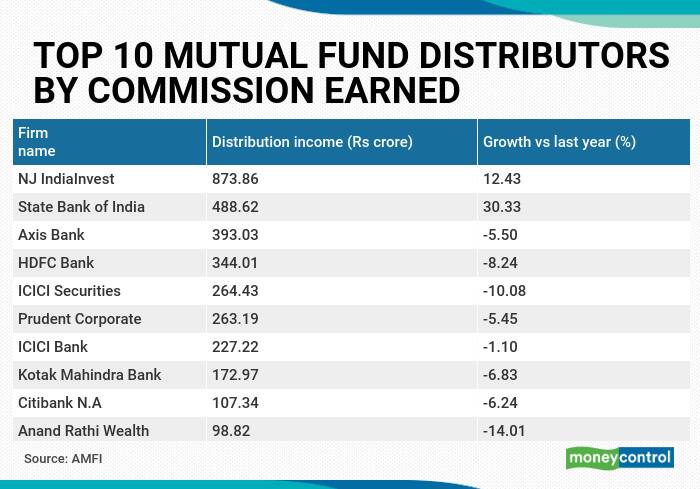Mutual fund (MF) distributors’ income has grown at a tepid pace in financial year 2020-2021. According to data from AMFI, MF distributors received Rs 6,617 crore in 2020-2021, which was just 7.6 percent higher than the previous financial year.
In contrast, the MF industry’s asset size grew by 41 percent to Rs 31.42 trillion in 2020-2021. The asset size expanded as stock markets rose on the back of one of the biggest market rallies.
So, what is holding the growth of commissions?
Linking of expense ratios with asset size
To cut the cost of investing, SEBI linked expense ratios with asset slabs in September 2018. This essentially forced schemes with higher asset size to charge lower expense ratios. By doing so, SEBI updated its age-old formula to accommodate schemes that had become larger over the years.
The total expense ratio (TER) includes expenses such as fund management fee and distribution commissions.

“As several equity funds have become big in size, the commissions that can be earned from these schemes have significantly reduced. A scheme that would earlier fetch 1.5-1.75 percent, now offers 0.75 percent commission rate,” says Anup Bhaiya, founder of Money Honey Financial Services, which handles mutual fund assets of Rs 800 crore.
Direct plans may impact in future
Online modes of investing have led to the increasing popularity of direct plans. As the name suggests, mutual fund investors can directly invest in MF schemes through these plans, bypassing any intermediaries.“Wherever the asset growth comes through direct plans, that can impact distribution commissions,” says Kaustubh Belapurkar, director-manager research at Morningstar.
For the last one year, the share of direct plans in industry assets has remained more or less the same.
As of May 31, 2021, 19 percent of individual investor assets came through direct plans, while it was a little over 18 percent exactly a year back.
Also read: Why India's mutual funds boom is restricted to large cities?
However, distributors still have a lot of potential for growth. Belapurkar says the MF assets are still highly under-penetrated in India, and both commission-led distribution and fee-based advisory businesses can co-exist.
A recent Jefferies report states that assets under management of MFs are just 12 percent of India’s GDP, whereas the global average is 63 percent.
Other developing nations such as Brazil (68 percent of GDP) and South Africa (48 percent of GDP) have much higher proportions of mutual fund investors.
How top-ten distributors did in 2020-2021?
In recent years, MF distributors have been seeing their earnings decline. In 2018-2019, their earnings had declined by seven percent to Rs 7,948 crore. In 2019-2020, their earnings had declined by another 22 percent to Rs 6,148 crore.

Barring two of the top-ten MF distributors in India -- NJ India Invest and State Bank of India -- distribution income declined for the rest of them in financial year 2020-2021.
Also read: NJ India: The distributor of schemes will now run a data-driven mutual fund house
NJ India Invest, which is the largest distributor by distiribution commission, saw its distribution income grow by 12.43 percent to Rs 873 crore. For State Bank of India, the income grew by 30 percent to Rs 488 crore.